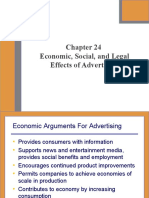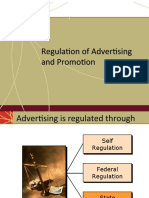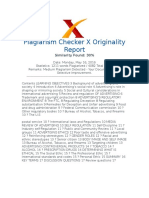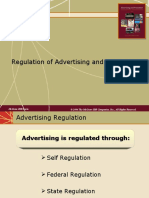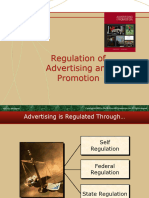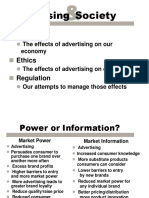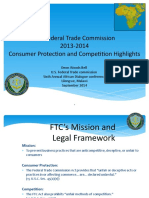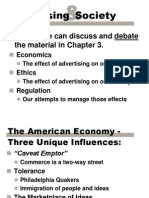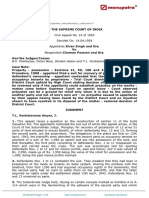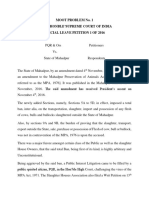Chapter 24 Economic, Social, and Legal Effects of Advertising
History of Advertising Criticism
Era of Exaggerated Claims, 1865-1900
Era of Public Awareness, 1900-1965
Era of Social Responsibility, 1965-present
24-2
�Economic Arguments In Favor of Advertising_1 Advertising provides consumers with information to make decisions. Advertising supports news and entertainment media, providing social benefits as well as employment opportunities. Advertising encourages continued product improvements.
24-3
�Economic Arguments In Favor of Advertising_2 Advertising permits companies to achieve economies of scale in production. Advertising contributes to economy by increasing consumption.
24-4
�Economic Arguments Against Advertising
1. Intent of advertising is to persuade, not inform. 2. Advertising mostly creates switching behavior rather than new consumption. 3. Advertising may emphasize emotion over price competition. 4. High rate of expenditures makes it difficult for new products to enter market.
24-5
�Social Role of Advertising
Inadvertent social role: social agenda
Overt social role: social change
24-6
�Exhibit 24.3 Social Causes Promoted with Advertising
24-7
�Social Criticisms of Advertising
Privacy concerns
Product placement
Influence on obesity
24-8
�Social Criticisms
Ad content Product categories Excess Societal influence
24-9
�The Ad Council Addresses Many Social Issues
24-10
�Social Criticisms
Ad content Product categories Excess Societal influence
24-11
�Cause-Related Marketing
The Home Depot Foundation supports non-profit organizations.
24-12
�Cause-Related Marketing
24-13
�Tactical Categories of CRM
Transactional programs
Message promotions
Licensing programs
24-14
�Constraints on Advertising
Laws and regulations of legally constituted bodies such as Congress and the Federal Trade Commission Control by media through guidelines for advertising acceptability Self-regulation by advertising agencies using various trade practice recommendations and codes of conduct
24-15
�Federal Trade Commission
24-16
�Determining Deception in Advertising
There must be representation, omission, or practice likely to mislead consumers.
The act or practice must be considered from the perspective of a reasonable consumer. The representation, omission, or practice must be material.
24-17
�Steps in FTC Enforcement_1
1: A claim of deceptive practices is given to the FTC. 2: The FTC begins investigation with a request for substantiation. 3: If the FTC finds the practice to be unsubstantiated, a complaint is issued.
24-18
�Steps in FTC Enforcement_2
4: If advertiser refuses to sign consent decree, a cease and desist order is issued. 5: FTC may request that the advertiser to run corrective advertisements. 6: If a company cannot reach an agreement with the FTC, it will move to the Federal Court of Appeals.
24-19
�Common Areas of FTC Inquiry
Environmental Claims Made in the USA Claims
Free Claims
Fact vs. Puffery Warranties and Guarantees
Testimonials
24-20
�The Robinson-Patman Act and Cooperative Advertising
1890 Federal Sherman Antitrust Act
1914 Clayton Antitrust Act
1936 Robinson-Patman Act
24-21
�Major Provisions of the CAN-SPAM Act
It bans false or misleading header information. It prohibits deceptive subject lines. It requires that your email give recipients an opt-out method. It requires that commercial email be identified as an advertisement and include the senders valid physical postal address.
24-22
�Problems Cited for Comparison Advertising
Risk of promoting competitive brands May appear unfair to consumers and damage reputation of brand using it May precipitate lawsuits by companies who feel their brands were unfairly disparaged
24-23
�The BBB Promotes Self-Regulation
24-24
�Exhibit 24.9 The NARC Review Process
24-25
�The Childrens Advertising Unit of the NAD
Product presentations and claims
Disclosures and disclaimers Endorsements and promotions Safety
Sales pressure Comparative claims Premiums, sweepstakes Interactive media
24-26
�CARU
24-27
